Limb Lengthening Patient Stories
Back in the Game
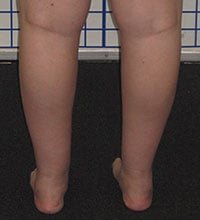
Jennifer's Story
I was born with severe knock-knees and pronated feet (valgus deformities). I walked awkwardly and always with pain. I went to doctors, but they were never able to help me. The only thing they had to say was that I would "just have to learn to live with it." But then in 2012, at age 24, I met Dr. Rozbruch and everything changed.
Read Jennifer's Story
I was born with severe knock-knees and pronated feet (valgus deformities). I walked awkwardly and always with pain. I went to doctors, but they were never able to help me. The only thing they had to say was that I would "just have to learn to live with it." But then in 2012, at age 24, I met Dr. Rozbruch and everything changed.
Read Jennifer's Story

Don's Story
In 2011, I was competing in a triathlon in Hawaii when I had a bike accident that shattered my femur. The surgeon in Hawaii did a great initial job but the femur did not heal properly and I lost about an inch of my left leg. Triathlon training, competition, and production is a large part of my life. I was lucky have been referred to Dr. Rozbruch.
Read Don's Story
In 2011, I was competing in a triathlon in Hawaii when I had a bike accident that shattered my femur. The surgeon in Hawaii did a great initial job but the femur did not heal properly and I lost about an inch of my left leg. Triathlon training, competition, and production is a large part of my life. I was lucky have been referred to Dr. Rozbruch.
Read Don's Story

Dov's Story
I had an osteotomy at HSS in April of 2011, and had my Taylor Spacial Frame removed at the beginning of August 2011. During this period Dr. Rozbruch and his wonderful team at the LLCR service corrected my right tibia by 30 degrees and it now is completely straight! I currently feel great, and recently ran a marathon in 3:15, and a half marathon in 1:25 (both personal records for me). I am incredibly grateful to Dr Rozbruch and his team at LLCR Service for doing an amazing job. He did what others said was not possible or too risky and changed my life.
Read Dov's Story
I had an osteotomy at HSS in April of 2011, and had my Taylor Spacial Frame removed at the beginning of August 2011. During this period Dr. Rozbruch and his wonderful team at the LLCR service corrected my right tibia by 30 degrees and it now is completely straight! I currently feel great, and recently ran a marathon in 3:15, and a half marathon in 1:25 (both personal records for me). I am incredibly grateful to Dr Rozbruch and his team at LLCR Service for doing an amazing job. He did what others said was not possible or too risky and changed my life.
Read Dov's Story

Celine's Story
On January 29, 2012, I was with a friend riding in a beach car. Being in the passenger seat wasn’t much of an advantage, because minutes later the little car that seemed harmless was over my right leg. I remember how I didn't even feel the tears running down my face. It was a sudden shock. When the car was lifted up, I felt like somebody had ripped off my right leg from the knee down. I couldn't even breathe right. When they picked me up, I saw my jingly leg, as if I had 3 more knees. I was taken to the smallest hospital in the little town we were in, miles and miles away from the city. The ride seems like a dream today.
Read Celine's Story
On January 29, 2012, I was with a friend riding in a beach car. Being in the passenger seat wasn’t much of an advantage, because minutes later the little car that seemed harmless was over my right leg. I remember how I didn't even feel the tears running down my face. It was a sudden shock. When the car was lifted up, I felt like somebody had ripped off my right leg from the knee down. I couldn't even breathe right. When they picked me up, I saw my jingly leg, as if I had 3 more knees. I was taken to the smallest hospital in the little town we were in, miles and miles away from the city. The ride seems like a dream today.
Read Celine's Story

Peter's Story
In February 2011, I shattered my right lower tibia and snapped by fibula when an ice dagger collapsed with me on it as I was ice-climbing. A good friend, an orthopedic surgeon by the name of John Mullen, put me in touch with Dr. S. Robert Rozbruch at HSS because of the severity of my injury.
Read Peter's Story
In February 2011, I shattered my right lower tibia and snapped by fibula when an ice dagger collapsed with me on it as I was ice-climbing. A good friend, an orthopedic surgeon by the name of John Mullen, put me in touch with Dr. S. Robert Rozbruch at HSS because of the severity of my injury.
Read Peter's Story
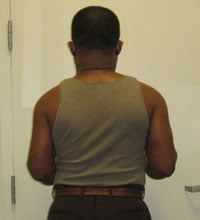
Emmanuel's Story
My story cuts across from the continent of Africa to the great city of New York, USA. Growing up in Ghana, I came to realize how my congenital disorder of one arm longer than the other affected my self-esteem and interaction with other children of my age. However, in coming to the USA and particularly New York, I was determined to find a solution to this disorder. If anything can happen, it must be here in New York. Luckily enough, after about twenty years in the city, my friend mentioned that his wife has had a procedure done by Dr. S. Robert Rozbruch. I didn't hesitate to make an appointment to see him.
Read Emmanuel's Story
My story cuts across from the continent of Africa to the great city of New York, USA. Growing up in Ghana, I came to realize how my congenital disorder of one arm longer than the other affected my self-esteem and interaction with other children of my age. However, in coming to the USA and particularly New York, I was determined to find a solution to this disorder. If anything can happen, it must be here in New York. Luckily enough, after about twenty years in the city, my friend mentioned that his wife has had a procedure done by Dr. S. Robert Rozbruch. I didn't hesitate to make an appointment to see him.
Read Emmanuel's Story

Julie's Story
My story really began 23 years ago when I tripped on a rock in a parking lot. Who knew that such a simple mishap could lead to where I am today? My fall was caused by a giant cell tumor in my right ankle that had fractured the joint. This led to surgery to remove the tumor and a graft taken from my hip to “rebuild the ankle.” Two surgeries followed by several months of recovery, I was back on my feet, with limitations and with the knowledge that “someday,” I might need to have a fusion if the ankle joint deteriorated and caused too much pain.
Read Julie's Story
My story really began 23 years ago when I tripped on a rock in a parking lot. Who knew that such a simple mishap could lead to where I am today? My fall was caused by a giant cell tumor in my right ankle that had fractured the joint. This led to surgery to remove the tumor and a graft taken from my hip to “rebuild the ankle.” Two surgeries followed by several months of recovery, I was back on my feet, with limitations and with the knowledge that “someday,” I might need to have a fusion if the ankle joint deteriorated and caused too much pain.
Read Julie's Story

Suzanne's Story
A motor vehicle shattered my leg. The odyssey with Dr. Rozbruch began with a 5 cm leg lengthening. Later surgeries included an osteotomy and a total knee replacement.
Read Suzanne's Story
A motor vehicle shattered my leg. The odyssey with Dr. Rozbruch began with a 5 cm leg lengthening. Later surgeries included an osteotomy and a total knee replacement.
Read Suzanne's Story
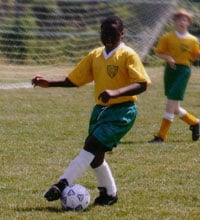
Lansana's Story
I am from Sierra Leone and came to the USA when I was 8 years old. I was bitten by a snake and my tibia was infected. Dr. Rozbruch did limb lengthening surgery over a 2 year period and connected my leg to my foot.
Read Lansana's Story
I am from Sierra Leone and came to the USA when I was 8 years old. I was bitten by a snake and my tibia was infected. Dr. Rozbruch did limb lengthening surgery over a 2 year period and connected my leg to my foot.
Read Lansana's Story

Latisha's Story
Dr. Rozbruch has changed my life and allowed me to be able to walk, run, and dance circles around the gym.
Read Latishia's Story
Dr. Rozbruch has changed my life and allowed me to be able to walk, run, and dance circles around the gym.
Read Latishia's Story
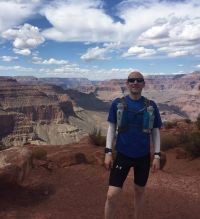
D.G.'s Story
I am grateful to Dr Rozbruch and his team at HSS for the excellent care I received, pre- and post-surgery, and I’m looking forward to enjoying my legs for many years.
Read D.G.'s Story
I am grateful to Dr Rozbruch and his team at HSS for the excellent care I received, pre- and post-surgery, and I’m looking forward to enjoying my legs for many years.
Read D.G.'s Story

James Garza's Story
The strength, assertiveness, and confidence you showed in working on saving my leg is something me and my wife really, really needed.
Read Jame's Story
The strength, assertiveness, and confidence you showed in working on saving my leg is something me and my wife really, really needed.
Read Jame's Story
PRECICE

3-part series following Gabrielle's talus replacement and eventual ankle fusion.

Post-cancer limb lengthening after losing part of his femur to cancer.

Cody's story of recovery from a limb length discrepancy and leg deformity.
Bone Tumors and Lesions


Bowleg and Knock Knee Deformities


Foot and Ankle Deformities

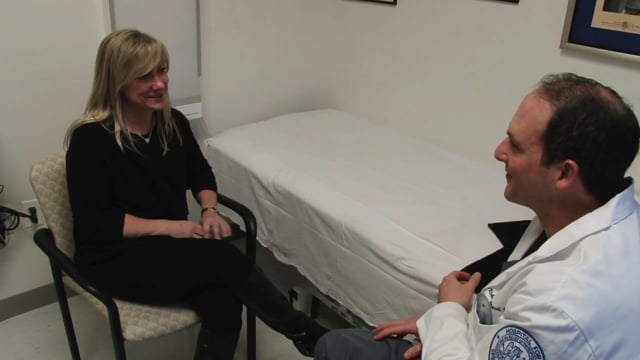
Trauma: Nonunion and Malunion

After a severe motorcycle accident, Jose spent over four months in the hospital undergoing multiple surgeries. Doctors considered amputating his left leg which had weakened due to trauma and subsequent infection, leaving him fearing he’d never walk again.

Upper Extremity

Kids and Teens




